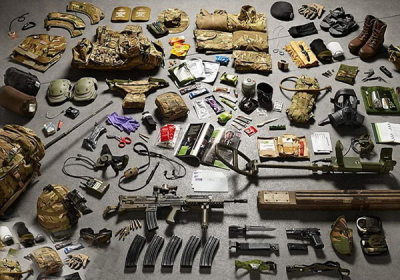
Riot control shields are shields such as polycarbonate (reinforced plastic) or metal that are used for protection from knives, thrown objects, kicks, punches, etc. They are typically used by police, corrections and security personnel in a defensive manner when there is unrest or violent protests that threaten the safety of the public and officials.
While shields have been around for thousands of years, these (often) transparent shields became necessary and popular after the violent protests in Europe in the 1950s, 1960s and 1970s. They allow the operator to look through the shield in all directions without visual obstruction. This ability to scan for potential threats and bypass potential dangers is critical in unstable situations.
There are different kinds of riot control shield designs on the market. Each has its unique advantages and limitations. Therefore, it is up to each department or agency to choose the appropriate shield for the specific threat they need to protect against. In all situations, it is vital that the officer maintains control of the shield at all times.
Riot control shields are primarily designed to protect users from a variety of blunt weapons and projectiles. In a riot or melee situation, anything that comes close can be used as a weapon. Riot control shields can vary in thickness from 2 to 8 mm. Most are made of 4 to 6 mm thick polycarbonate. These shields help protect an area, control tensions, and help law enforcement push back crowds if needed. Given the dynamic nature of these events, the shield protects the user from a variety of throwing threats including chairs, rocks, bricks, bats, baseball bats and crowbars. In addition, they prevent punches, kicks, and spit.
Depending on the manufacturer, the shield may contain various other protections. Some are flame retardant, which protects them from heat and heat. Others have inherent protection against chemicals and biological substances such as blood, urine, and feces. To prevent contamination and infectious diseases, shields should be properly cleaned and disinfected according to departmental standard operating procedures and manufacturer's cleaning recommendations.
Like anything, riot control shields can be damaged and destroyed by excessive or repeated strikes. The edges of the shield are also susceptible to damage from drops. Riot control shields are not bulletproof. In such applications, ballistic shields are necessary. Most riot control shields are also ineffective at blocking arrows.
 Precautions for Using Bulletproof VestsJuly 5, 20221. Precautions for cleaning bulletproof vestsWash the bulletproof vest carrier and keep the carrier for later use, it is important to have at least two carriers, one for washing and one for wearing. K...view
Precautions for Using Bulletproof VestsJuly 5, 20221. Precautions for cleaning bulletproof vestsWash the bulletproof vest carrier and keep the carrier for later use, it is important to have at least two carriers, one for washing and one for wearing. K...view Is Ballistic Helmet Really Bulletproof?November 29, 2021Everyone knows that the battlefield is very dangerous, especially under the rain of guns and bullets in modern warfare. An inconspicuous bullet that does not draw people's attention may kill soldi...view
Is Ballistic Helmet Really Bulletproof?November 29, 2021Everyone knows that the battlefield is very dangerous, especially under the rain of guns and bullets in modern warfare. An inconspicuous bullet that does not draw people's attention may kill soldi...view Does the Integration Of Body Armor & Tactical Vest Means ModularizationJune 30, 2021It seems that there is an increasing tendency to combine body armor and carrying gear into one since 21st century. Body armor and tactical vest are very important for individual equipment.view
Does the Integration Of Body Armor & Tactical Vest Means ModularizationJune 30, 2021It seems that there is an increasing tendency to combine body armor and carrying gear into one since 21st century. Body armor and tactical vest are very important for individual equipment.view Can Bulletproof Vests Effectively Block Cold Weapons?March 14, 20231. Understanding bulletproof jacketsBulletproof jackets are used to protect the body from harm caused by bullets or fragments. Bulletproof jackets mainly consist of two parts: a clothing cover and a b...view
Can Bulletproof Vests Effectively Block Cold Weapons?March 14, 20231. Understanding bulletproof jacketsBulletproof jackets are used to protect the body from harm caused by bullets or fragments. Bulletproof jackets mainly consist of two parts: a clothing cover and a b...view Is Body Armor Both Bullet-Proof and Stab-Proof?August 9, 2021We can know that bulletproof vest and stab-resistant vest belong to the category of protective equipment, they seem to be very similar, but they are aimed at different fields.view
Is Body Armor Both Bullet-Proof and Stab-Proof?August 9, 2021We can know that bulletproof vest and stab-resistant vest belong to the category of protective equipment, they seem to be very similar, but they are aimed at different fields.view What Are the Benefits of Buying Military Boots?July 26, 2022Ⅰ. Choose to buy military bootsYour feet are undoubtedly one of the main body parts that are bound to be sore when it comes to being able to do long walks and/or extensive travel. Also, you're li...view
What Are the Benefits of Buying Military Boots?July 26, 2022Ⅰ. Choose to buy military bootsYour feet are undoubtedly one of the main body parts that are bound to be sore when it comes to being able to do long walks and/or extensive travel. Also, you're li...view